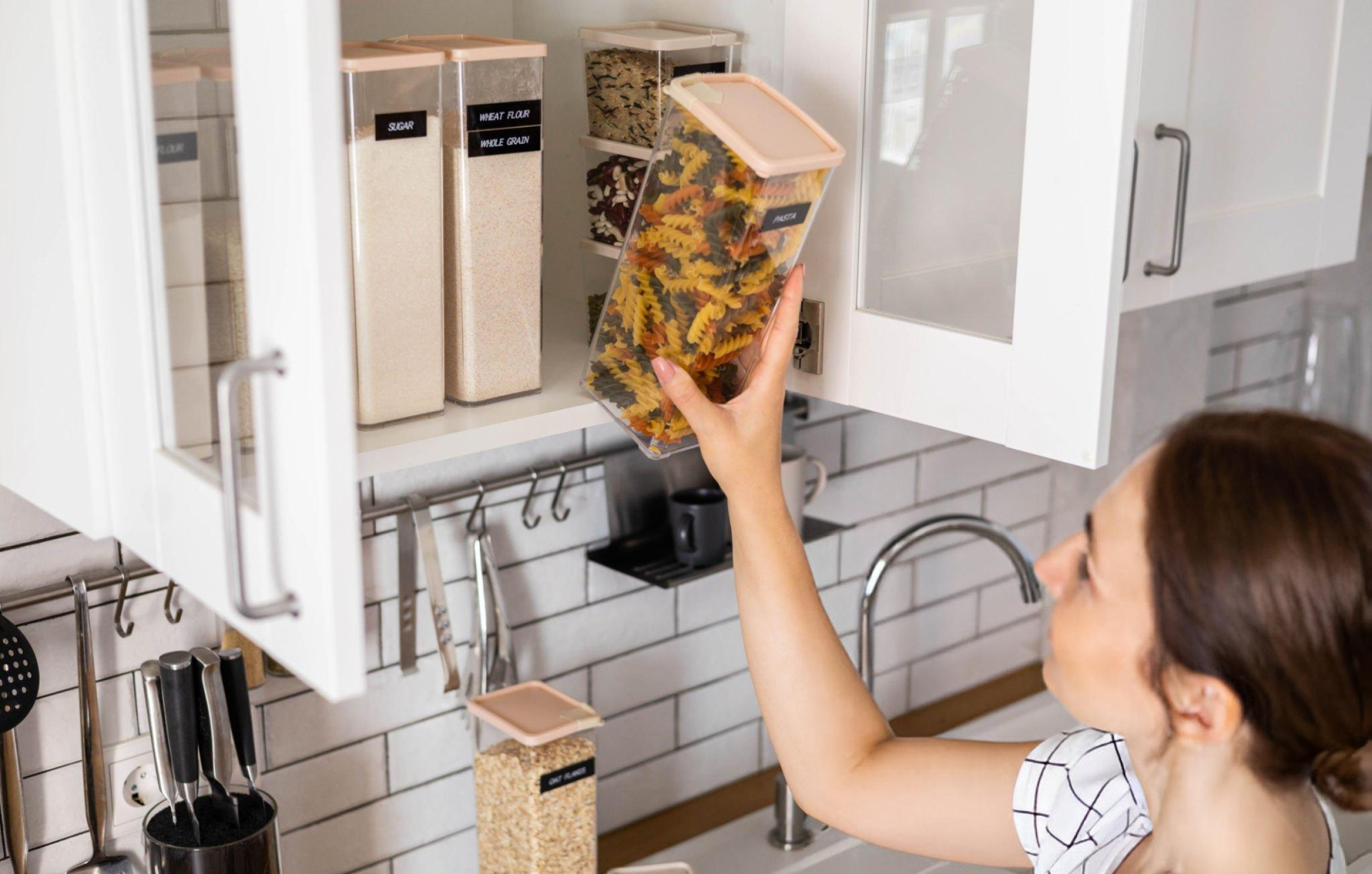Kitchen Organization Tips for Busy Families: Create Systems That Actually Work
Busy families need kitchen organization systems that can handle the chaos of daily life while making meal preparation faster and easier. Between school lunches, after-school snacks, dinner prep, and weekend cooking projects, family kitchens face constant demands that can quickly turn organized spaces into cluttered confusion. The key is creating simple, sustainable systems that every family member can follow while accommodating the reality of hectic schedules. Good kitchen organization for families goes beyond just having a place for everything. It means creating systems that work even when you’re rushing to get dinner on the table, kids are grabbing snacks, and life is pulling you in multiple directions. The best organizational systems are the ones that maintain themselves with minimal effort while making your daily kitchen tasks more efficient and less stressful. Start with Zones That Match Your Family’s Routine Successful kitchen organization begins with understanding how your family actually uses the kitchen space. Create zones based on your daily activities rather than trying to follow generic organization advice that doesn’t fit your lifestyle. Most busy families benefit from distinct zones for meal prep, snack storage, school supplies, and cleanup activities. The breakfast zone should include everything needed for morning meals within easy reach. Store cereals, coffee, tea, bread for toast, and breakfast dishes in one area so family members can prepare breakfast quickly without searching through multiple cabinets. Include plates, bowls, cups, and utensils that children can safely access independently. Create a dedicated snack zone that kids can access without disrupting meal preparation areas. Use lower cabinets or a designated pantry section for healthy snacks, and include a small bin or basket for grab-and-go items. This zone prevents children from digging through meal ingredients when looking for snacks. The lunch-packing zone centralizes everything needed for school and work lunches. Store lunch boxes, thermoses, napkins, plastic containers, and lunch-making supplies in one area. Include a small basket for lunch money, permission slips, and other school-related items that need to go out the door each morning. Design your dinner prep zone around your most frequently used cooking tools and ingredients. Keep cutting boards, knives, measuring tools, and everyday spices within arm’s reach of your main prep area. This zone should flow logically into cooking and serving areas to minimize movement during meal preparation. Smart Storage Solutions for Family-Sized Needs Family kitchens require storage solutions that accommodate bulk purchases, multiple serving sizes, and the variety of food preferences that come with different ages and dietary needs. Focus on storage systems that keep items visible and accessible while maximizing space efficiency. Use clear containers for pantry storage to make inventory checks quick and easy. Family-sized containers work well for cereals, snacks, and bulk items while keeping food fresh longer than original packaging. Label containers clearly so family members can find what they need and put items back in the correct location. Implement a first-in, first-out system for perishables to reduce food waste. Store newer items behind older ones, and use clear bins in the refrigerator to group similar items together. This system helps you use food before it expires while making meal planning easier. Create designated spaces for each family member’s special dietary needs or preferences. Use separate bins or shelves for gluten-free items, allergy-safe foods, or individual family member’s favorite snacks. This organization prevents cross-contamination while ensuring everyone can find their preferred foods easily. Install pull-out drawers in lower cabinets to improve accessibility for both adults and children. Deep drawers work particularly well for pots, pans, and large serving dishes that are difficult to access in traditional cabinets. Pull-out systems also prevent items from getting lost in the back of deep cabinets. Use vertical space efficiently with stackable bins, shelf risers, and door-mounted storage. Over-the-door organizers work well for cleaning supplies, spices, or small kitchen tools. Stackable bins help maximize cabinet height while keeping categories separated and accessible. Meal Planning and Prep Organization Effective meal planning reduces daily decision-making stress while ensuring your family eats well despite busy schedules. Create systems that make meal planning, grocery shopping, and meal prep more efficient and less time-consuming. Establish a weekly meal planning routine that involves the whole family. Use a visible calendar or whiteboard to plan meals for the week, including who’s responsible for each meal and any special dietary considerations. Include family members in planning to ensure meals everyone will enjoy while teaching children about nutrition and meal preparation. Create a master grocery list organized by store sections to make shopping faster and more efficient. Include categories for produce, dairy, meat, pantry items, and household supplies. Keep the list in a central location where family members can add items as you run out, preventing last-minute shopping trips. Batch prep ingredients on weekends or during less busy times to streamline weeknight cooking. Wash and chop vegetables, cook grains and proteins in advance, and portion out snacks for the week. Store prepped ingredients in clear containers with dates to maintain freshness and safety. Organize your freezer with labeled bins for different types of meals and ingredients. Use one bin for quick breakfast items, another for easy lunch options, and a third for dinner components. This organization makes it easy to find frozen items quickly while preventing food from getting lost in freezer depths. Set up a rotation system for leftovers to ensure they get eaten before spoiling. Use clear containers with dates, and designate specific refrigerator areas for leftovers that need to be eaten soon. Implement family rules about checking for leftovers before starting new meals. Kid-Friendly Organization Systems Children can contribute to kitchen organization when systems are designed with their capabilities in mind. Age-appropriate organization systems teach responsibility while reducing the burden on parents to manage everything independently. Create lower storage areas that children can access safely for dishes, cups, and snacks. Use step stools strategically placed for older children to reach higher areas safely. Ensure that breakable items and dangerous tools are stored safely out of reach while keeping appropriate items accessible. Use


